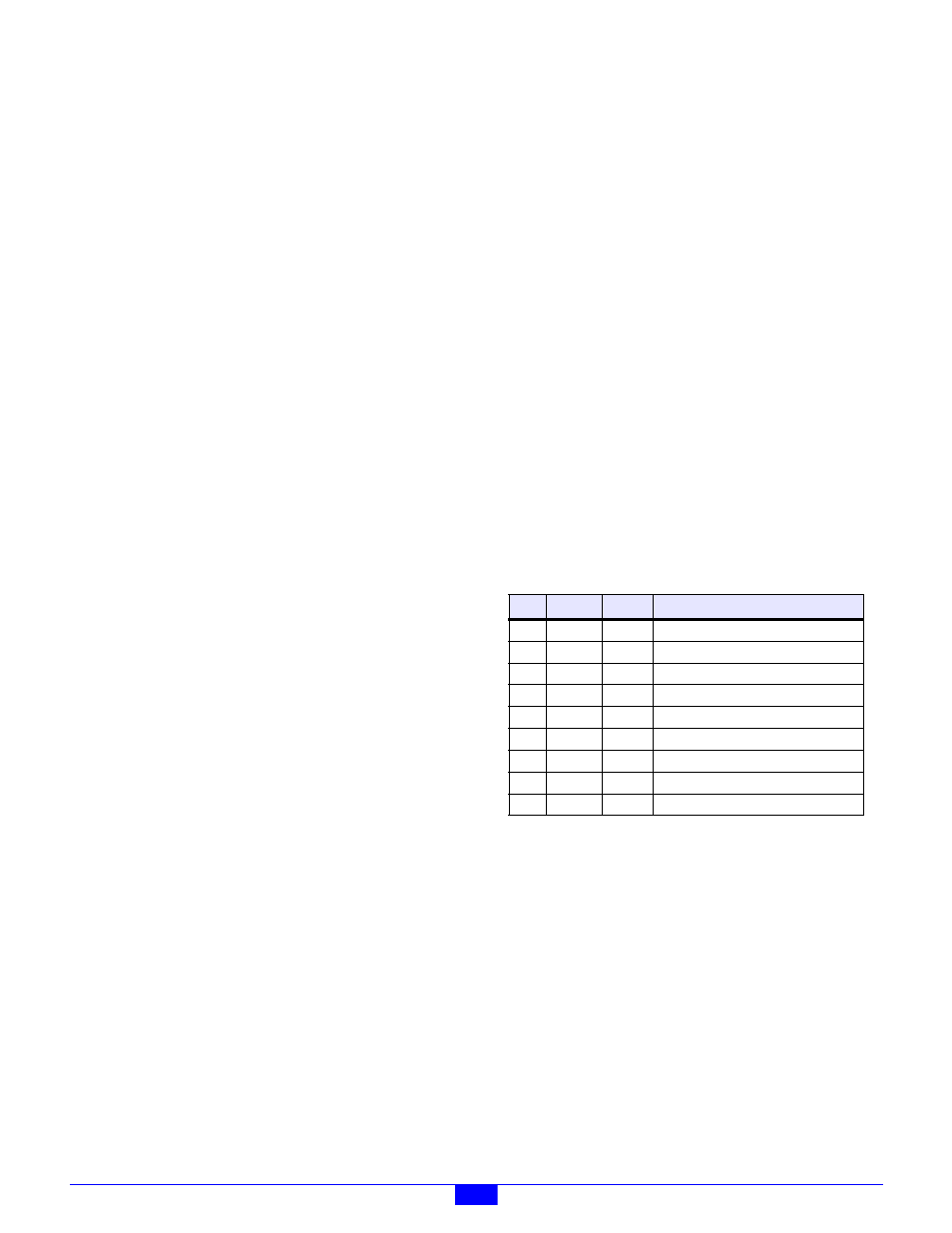Chapter 4: serial communication server, 1 overview, 2 hardware configuration – Sensoray 2600 User Manual
Page 22: 1 flow control, 2 reset, 1 com port connectors

2600 Family Instruction Manual
17
Chapter 4 : Serial Communication Server
Chapter 4: Serial Communication Server
4.1 Overview
In addition to its gateway role, the MM also behaves as a
communication server by providing serial communication
services to an Ethernet client. This chapter describes the
behavior of the MM in its role as a serial communication
server.
The MM includes four serial communication channels (com
ports). These com ports are referenced by the symbolic
channel names COM1, COM2, COM3 and COM4.
Under software control, each com port may be independently
configured for either RS-232, RS-422 or RS-485 physical layer
compatibility. Integral termination resistors are supplied for
RS-422 and RS-485 line termination.
Each com port is allocated a 1KB transmit buffer and a 1KB
receive buffer.
Standard baud rates up to 115.2 kbps are supported, as well as
programmable options such as parity type, character size, and
number of stop bits.
If desired, an Ethernet client may communicate with each com
port via a private communication thread. Each such thread
employs a unique UDP port number, thus enabling one or more
Ethernet clients to carry on concurrent conversations with
multiple com ports.
Each com port may be independently assigned to any arbitrary
Ethernet client, although most systems are configured such that
all four com ports serve a single Ethernet client. For example,
COM1 could be assigned to one client and COM2 could be
assigned to a different client.
4.1.1 Flow Control
Software flow control (XON/XOFF) is programmable for each
com port. Hardware flow control is not supported.
When software flow control is enabled for a com port, it
applies to both transmit and receive operations.
The transmitter will immediately cease transmissions (after
completing the current character transmission) upon receipt of
an XOFF character, and restart transmissions upon receipt of
an XON character.
An XOFF will be sent by the com port transmitter when the
receiver’s buffer fills to within 32 bytes of full. If an XOFF
has previously been sent (with no matching XON), an XON
will be sent when the receiver buffer character count falls
below 32.
4.1.2 Reset
As described in Chapter 3, the MM can be reset automatically
by a gateway communication time-out (see Section 3.9.6), or
explicitly by a client-invoked gateway reset action (Sections
3.9.3 and 3.9.4).
All com ports are reset to their default conditions when the
MM is reset. As a result, all independent communication
threads that are running on the Ethernet client should be
notified in the event of a MM reset so that they may take the
appropriate action.
4.2 Hardware Configuration
The physical layer employed by each COM port is configured
under software control, so there is no need to install
configuration programming shunts. It is only necessary to
ensure that the proper connector pins are used for the desired
electrical interface.
4.2.1 COM Port Connectors
Four male DB-9 connectors, designated “COM1” to “COM4,”
are provided for connecting external devices to the COM ports.
Each of these connectors is assigned identical pinouts as shown
in Table 7.
The following sub-sections detail the communication cable
wiring for RS-232, RS-422 and RS-485 applications.
Shielded cable is recommended for communication cables,
although unshielded cables may provide satisfactory
performance. If shielded cable is used, the shield conductor
should be connected to ground at one end of the cable and left
disconnected at the other end of the cable. This will provide
shielding without introducing ground loops. All of the
following sections assume the use of shielded communication
cables.
4.2.1.1 RS-232 Wiring
All RS-232 applications should be wired as shown in Figure
16.
Table 7: COM Port Connector Pinouts
Pin
Name
Type
Signal Function
1
Rx422+
In
RS-422 receive, active high
2
Rx232
In
RS-232 receive
3
Tx232
Out
RS-232 transmit
4
Tx422+
Out
RS-422 transmit, active high
5
GND
Ref
Signal reference.
6
Rx422-
In
RS-422 receive, active low
7
RxTerm-
---
Termination resistor, receive comp.
8
TxTerm-
---
Termination resistor, transmit comp.
9
Tx422-
Out
RS-422 transmit, active low
